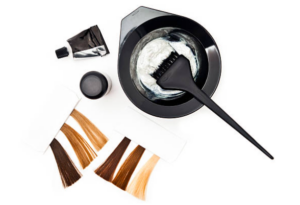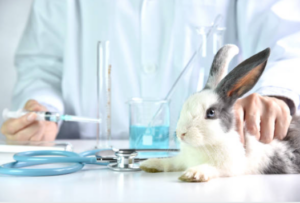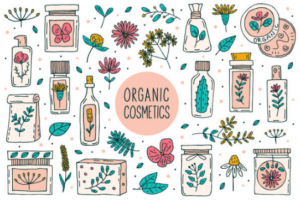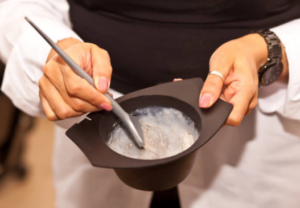The Painful Price of Colorful Tresses

In the vibrant world of beauty and personal care, the allure of colorful tresses has captivated hearts and inspired countless individuals to experiment with their hair. However, the pursuit of beauty sometimes comes at a hidden cost – the painful reality of animal testing. In this comprehensive exploration, we delve into the unsettling truth behind hair dye testing on animals, shedding light on the ethical implications that often go unnoticed in the pursuit of stylish, colorful locks.
The beauty industry has long been entangled with the controversial practice of animal testing. While the awareness of cruelty-free products is on the rise, there are still areas within the industry where animals continue to suffer for the sake of beauty, and hair dye testing is one such domain.
Hair dyes undergo a series of tests to ensure safety and efficacy, including assessments for skin irritation, allergic reactions, and potential toxicity. Traditionally, these tests have involved subjecting animals to the harsh chemicals found in hair dyes, causing immense suffering in the process.
Animal Suffering in Hair Dye Testing
- Dermal Irritation Tests:Among the most common and disturbing tests, dermal irritation tests involve applying hair dye directly to the skin of animals, typically rabbits or guinea pigs. This process is designed to gauge the potential for skin irritation and allergic reactions. Unfortunately, the consequences for these animals are dire. The chemicals in the hair dye can cause intense inflammation, redness, and, in severe cases, lead to painful burns. Witnessing the suffering of these animals is a stark reminder of the ethical challenges embedded in the beauty industry’s pursuit of flawless, vibrant hair.
- Inhalation Tests:In an attempt to assess the potential respiratory impact of hair dyes, animals are confined in small chambers and subjected to the fumes emanating from the products. This method, aside from its ethical concerns, raises questions about the applicability of results to humans, as exposure levels differ significantly. The animals experience respiratory distress, discomfort, and, in some cases, irreversible harm. The toll on their well-being serves as a poignant testament to the need for more humane testing practices.
- Oral Ingestion Tests:As part of toxicity assessments, animals are force-fed hair dye ingredients to evaluate their potential harm when ingested. This method often leads to internal damage, impacting vital organs and causing long-term health issues for the animals. Beyond the immediate distress, the enduring health consequences underline the severe toll such tests take on the lives of these creatures. The ethical ramifications of force-feeding animals for the sake of cosmetic testing are undeniable.
- Repeated Dose Toxicity Tests:These tests involve administering hair dye ingredients to animals repeatedly over an extended period. The aim is to observe the effects of prolonged exposure. Animals subjected to this type of testing endure ongoing discomfort and potential health issues. The extended suffering of these creatures poses critical questions about the necessity and morality of such testing practices.
Understanding the specifics of these tests brings to light the profound ethical implications of hair dye testing on animals. The suffering inflicted on these creatures, often behind closed doors, prompts reflection on the need for change within the beauty industry.

Alternatives to Animal Testing
As the dark realities of animal testing emerge, it becomes imperative to explore and champion alternatives that prioritize both product safety and animal welfare. The beauty industry is gradually shifting towards more ethical practices, and several promising alternatives are gaining traction.
- In Vitro Testing:In vitro testing, involving the use of cells outside living organisms, is a beacon of hope in the move towards cruelty-free beauty. This method allows for the assessment of hair dye safety without subjecting animals to harm. Skin models and cultures can be employed to provide accurate data about potential irritations and allergic reactions, presenting a humane alternative to traditional dermal irritation tests.
- Computer Modeling and Simulation:Advancements in computational methods, such as computer modeling and simulation, offer a sophisticated alternative to animal testing. These techniques enable scientists to predict the effects of hair dye ingredients without exposing animals to harm. While not without its challenges, this approach represents a significant step forward in the pursuit of cruelty-free beauty.
- Human Clinical Trials:Embracing human clinical trials as a direct testing method is a paradigm shift towards ethical practices. Willing human participants can be involved in trials to assess the safety and efficacy of hair dye products, eliminating the need for animal subjects. This approach not only respects the rights of humans but also provides more accurate information about how the product will interact with human skin and hair.
The Shift Towards Cruelty-Free Brands
Thankfully, there is a growing movement within the beauty industry to abandon animal testing altogether. Numerous brands are taking a stand against cruelty and committing to producing hair dye products that are not tested on animals. These cruelty-free brands prioritize the well-being of animals and emphasize the use of alternative testing methods to ensure product safety.
- L’Oreal: L’Oreal, one of the largest beauty and cosmetic companies globally, has made significant strides in reducing its reliance on animal testing. The company has invested heavily in alternative testing methods and aims to eliminate all animal testing by 2030. L’Oreal has also been at the forefront of advocating for the acceptance of alternative testing by regulatory authorities worldwide.
- Paul Mitchell: Paul Mitchell has long been a pioneer in cruelty-free beauty. The brand proudly asserts its commitment to producing cruelty-free hair care products, including hair dyes. Paul Mitchell’s dedication to ethical practices extends to its entire product line, reflecting a compassionate approach to beauty.
- Manic Panic: Known for its vibrant and unconventional hair colors, Manic Panic is a cruelty-free brand that has never tested its products on animals. The brand’s commitment to animal welfare is evident in its stance against contributing to the suffering of animals for the sake of beauty. Manic Panic has become a go-to choice for those seeking bold, cruelty-free hair color options.

The Power of Informed Choices
As consumers, we hold the power to influence change through our choices. By actively seeking out and supporting cruelty-free brands, we contribute to the growing demand for ethical practices in the beauty industry. Here are some steps we can take to make informed choices and promote a cruelty-free future:
- Check for Cruelty-Free Certifications:The Role of Certifications: Cruelty-free certifications serve as a beacon of trust for consumers seeking products that align with their ethical values. Certifications such as the Leaping Bunny or PETA’s cruelty-free stamp indicate that a brand has undergone rigorous assessments to ensure it abstains from animal testing at all stages of production.
Consumer Action: By actively seeking and supporting products with cruelty-free certifications, consumers send a clear message to the industry. This demand for ethical practices encourages brands to prioritize cruelty-free testing methods, ultimately contributing to a shift in industry norms.
- Research Brands’ Animal Testing Policies:Transparency Builds Trust: In an age of information, transparency is paramount. Many brands now recognize the value of openly sharing their stance on animal testing. Detailed policies displayed on official websites demonstrate a commitment to honesty and ethical practices.
Consumer Empowerment: Armed with this information, consumers can make choices aligned with their values. Brands that prioritize transparency and ethical testing practices often earn the trust and loyalty of consumers who appreciate the open dialogue surrounding their commitments.
- Support Cruelty-Free Initiatives:The Impact of Social Media: Social media platforms have become powerful tools for consumers to share their experiences and advocate for cruelty-free beauty. Positive reviews and endorsements of cruelty-free products contribute to a growing awareness and demand for compassionate alternatives.
Encouraging Conversations: Engaging in conversations about cruelty-free beauty within online communities, forums, and social media platforms amplifies the call for ethical practices. By sharing insights and experiences, consumers play an active role in shaping a culture that values cruelty-free choices.
- Advocate for Legislative Change:Consumer Voices in Legislation: Consumer advocacy extends beyond individual choices and into the realm of policy. Supporting legislative efforts aimed at restricting or eliminating animal testing in the cosmetics industry is a tangible way for consumers to influence change at a broader level.
Petitions and Campaigns: Signing petitions, supporting campaigns, and participating in initiatives by organizations working towards cruelty-free legislation all contribute to a collective voice demanding ethical change. Consumer involvement in these efforts helps build momentum for legislative reforms.

The power of informed choices lies not only in individual actions but in the collective impact of a consumer-driven movement toward cruelty-free beauty. As consumers educate themselves, seek out ethical certifications, and engage in conversations about cruelty-free alternatives, they become champions of change within the industry.
By supporting brands that prioritize transparency and cruelty-free practices, consumers send a powerful signal that ethical considerations are integral to their purchasing decisions. Social media becomes a platform for shared values, fostering a community that celebrates and encourages cruelty-free choices.
Beyond personal choices, consumers actively participating in legislative initiatives contribute to a future where the beauty industry operates without inflicting unnecessary harm on animals. As the demand for cruelty-free beauty grows, brands are prompted to innovate and invest in ethical testing methods, ultimately reshaping the industry’s landscape.
In the hands of informed consumers, each purchase becomes a vote for a cruelty-free future. It’s a journey towards a beauty culture that prioritizes compassion, transparency, and the well-being of both consumers and the creatures we share this planet with. Together, consumers hold the key to shaping a future where beauty is synonymous with kindness and responsibility.

